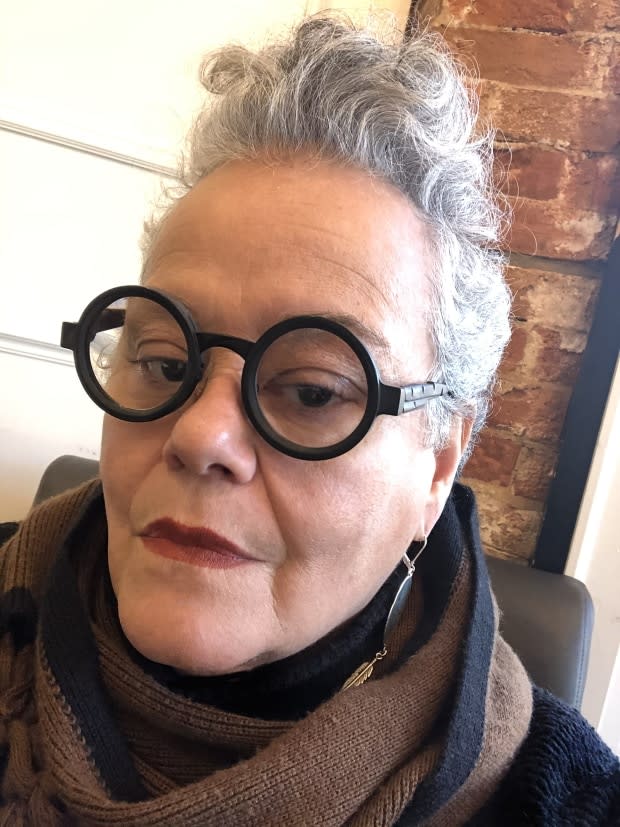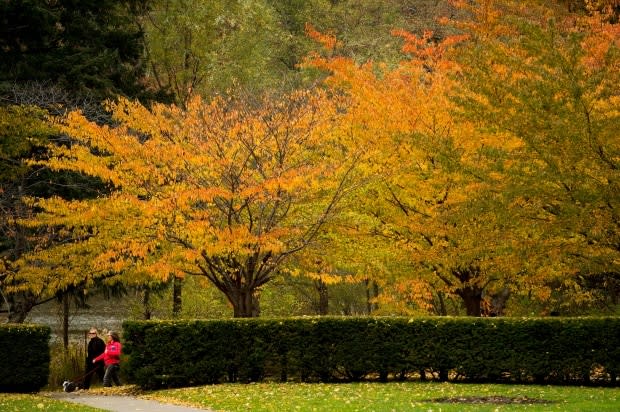'It's very precious': Indigenous collective wants input into managing High Park's oak savannah
An Indigenous collective wants a more active role in land restoration and management in Toronto, with a focus on High Park's rare black oak savannah.
The Indigenous Land Stewardship Circle is a collective of elders, knowledge holders and members of the urban Indigenous community who want to Indigenize and decolonize land restoration by healing the land through traditional approaches.
"What we're talking about is restoring the right relations with the land," said Catherine Tamarro, who is part of the land stewardship circle.
Tamarro is a Wyandot elder who belongs to the Wyandot of Anderdon Nation in Michigan. She's a multimedia artist who lives in Toronto.
"Indigenous people have been in that space for thousands of years," she said.
"I think that the idea is to have those rights of stewardship returned to us."
What is a black oak savannah?
Prior to the arrival of European settlers, the majority of southern Ontario was covered in densely forested areas that were broken up by two kinds of tallgrass ecosystems, prairies and savannahs.
Black oak savannah is characterized by grasses, shrubs and widely spaced oaks, and is an ecosystem relatively rare in Canada. Savannas are dependent on fire, either natural or human-caused, to maintain the open space. The black oak is resistant to fire, and some of the largest ones in Toronto are located in High Park.
The savannah is a place for traditional medicines and berries to grow and would attract grazing animals for hunting.

"It is a remnant of Indigenous land stewardship that exists in the city," said Tamarro. "It's very precious."
The black oak savannah in High Park is estimated to be approximately 4,000 years old. Since savannahs are characterized by open spaces, they were often the first areas to be cleared for settler developments and agriculture, and suppression of wildfires also reduced their expanses.
Challenges of park management
"It's significant because it's an approach to managing the landscape that is in pretty stark contrast to how Canadian municipal and federal authorities manage it," said Doug Anderson who is a Métis earthworker in the land stewardship circle.
Some of the challenges around managing High Park include controlling invasive plant species and looking for a sustainable way to restore the park to its natural state while still allowing for recreational usage.
The land stewardship circle believes that the use of pesticides for dealing with invasive species is detrimental to the entire ecosystem that exists within the savannah.
For decades, the city has been also been doing controlled burns in the park to maintain the savannah. While no burns happened in 2019, the land stewardship circle hopes that in the future contracts offered by the city for restoration are offered to Indigenous stewards.

Restoring the savannahs is a first step in restoring Indigenous relationships with the land for future generations, according to Anderson.
"We need to teach our kids how to heal the land," said Anderson.
"We have to have relationships with the land and we have to know how things grow and balance and how you can get a lot of food off it. We need to actually live with all of these things and in balance."
City says it welcomes feedback
The City of Toronto's Park's, Forestry and Recreation department said in a statement "We are engaged in conversations with the Indigenous community about incorporating Indigenous knowledge and practices in High Park.
"These conversations are ongoing, and we welcome feedback and suggestions for collaboration."
The statement said High Park is one of Toronto's most popular and ecologically sensitive parks.
"Practices, including prescribed burn management, have been selected based on research and experience and are part of the city's long-term management plan to protect and sustain Toronto's rare black oak woodlands and savannahs.
"Parks, Forestry and Recreation staff are committed to building a relationship with Indigenous communities, as well as exploring new partnerships and land use practices."


